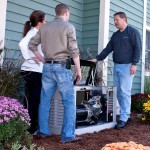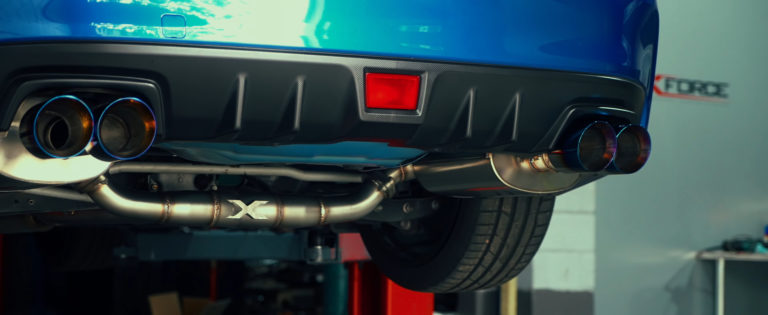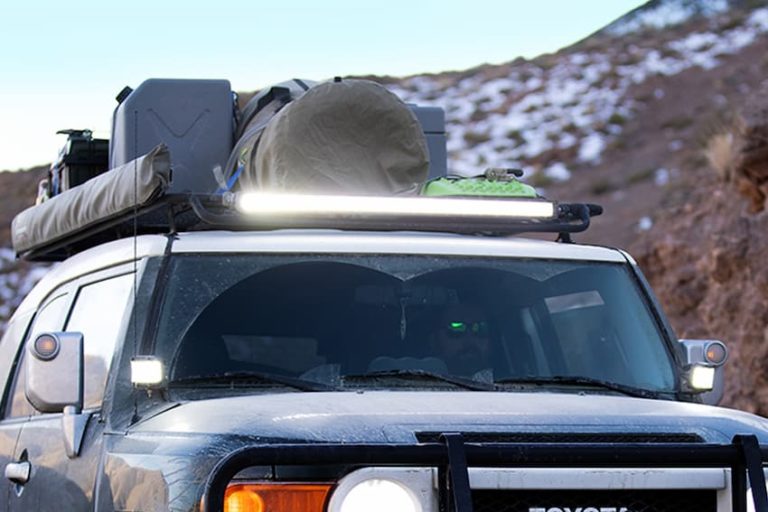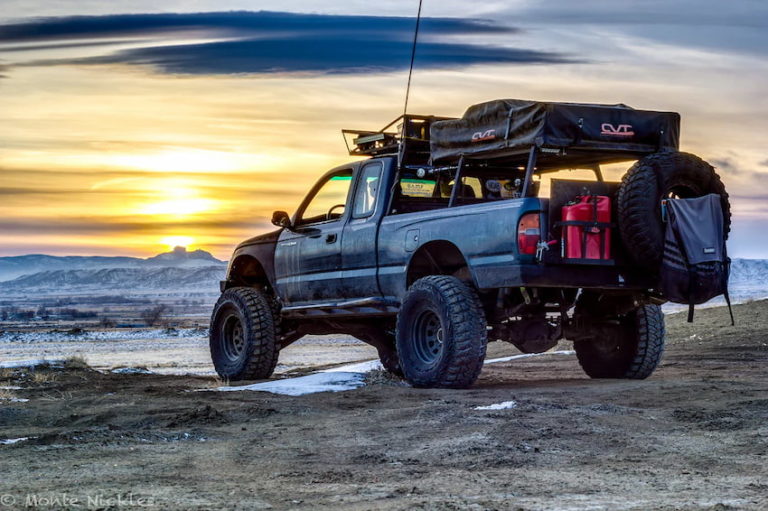If you’re regularly hitting the trails with your 4WD or ute, you’ll want a vehicle up to the task. You’ll also need a few basics when you get stuck. A car that sits higher, with bigger wheels and jacked up suspension kits, can afford to traverse terrain with bigger obstacles. Basic recovery gear, like winches, shackles and straps can pull you out when wheels are too bogged down to budge. But another piece of gear can both lift and winch, among other things, without leaving a sour taste due to the cost. Hi-lift off road jacks are an essential piece of recovery gear. They serve serious off-roaders and farmers alike. And, what’s more, they come at a fraction of the cost of a traditional electric winch. This is not to bag winches, by the way. Using one or the other, will depend on how serious your situation is.
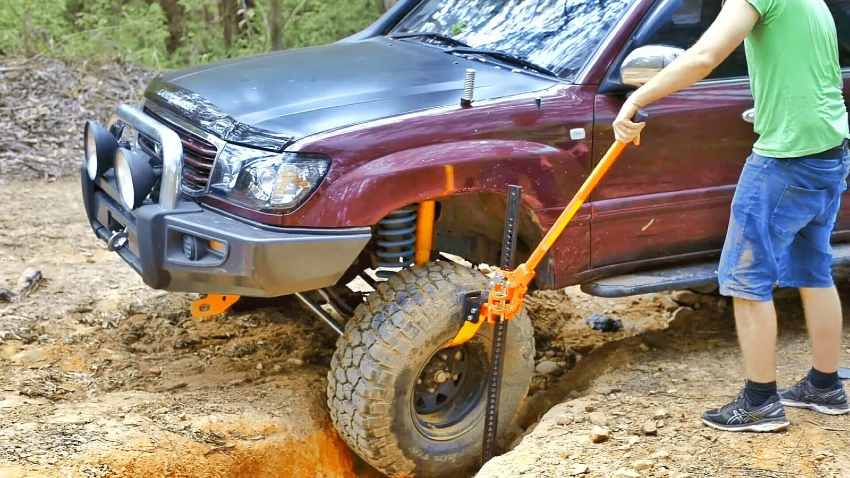
What are Hi-Lift Jacks?
Hi-lift jacks are versatile, rugged and simple off-road jacks with a multitude of uses. They’ve been around for over a century, and haven’t changed much during the years. A simple tool you’ll be reaching for when even more high-tech and considerably more expensive recovery and lifting gear fail.
The jack’s lifting abilities centre around the spine, with a series of holes running down its length. Two climbing pins in the running gear are engaged when the user cranks the handle. One pin holds the load, while the other is disengaged and free to slot into the hole above when lifting, or a hole below when lowering your 4WD (with the reversing latch set in position). The holding clamp (also called the large runner), holds the vehicle in place while it is being lifted or lowered. The whole assembly sits on a sturdy steel base, or foot piece.
Hi-lift jacks come in two sizes – 48 and 60 inches and both are large enough to lift your 4WD out of any situation. They come in two configurations in terms of materials – cast iron and cast iron and stamped steel, with the latter having steel in the foot piece, the handle socket, and the top clamp. Both are durable, though the all-cast jack is the one advertised as more robust. Either jack can lift up to 3000 kilos, though this is regulated by Aussie law for increased safety (with the maximum work loading limit set at 1050 kilos).
Uses
The first and most obvious reason you’d want a hi-lift jack is to lift your vehicle off the ground. This is done by fitting the lifting clamp under the bull bar, rear bar, or a rated recovery point along the chassis rails. To disperse the load over a larger area, the base of the jack needs to sit on a firm base, and there are accessory base plates sold packaged with most hi-lift jacks. The jack can also be used to lift a wheel that’s bogged down. Here proprietary additions like a JackMate can accommodate straps that are tied to the wheel, and lift the wheel up with each movement of the handle.
Besides lifting, off road jacks can be used for winching purposes. Again, using the rated tow points in the car, along with shackles and straps, the jack can pull a stuck vehicle out. This helps if you don’t have a fitted or operational winch. But the jack can also be used alongside a winch when recovering your 4WD or ute from extremely difficult situations.
Other uses include clamping, with a fitted top plate clamp, removing damaged tyres off rims, or pulling larger obstacles, like fallen stumps or boulders out of the way. Where the hi-lift jack is not recommended is in changing out tyres (use a regular bottle jack instead), or jacking up the vehicle for routine maintenance work.
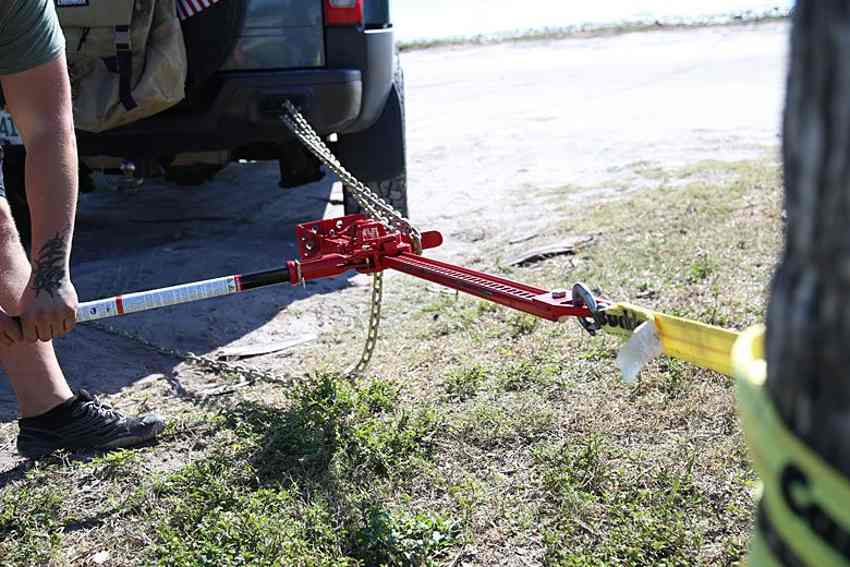
Accessories
The base plate is vital in that it stabilises the weight of the load over a larger area. This helps in loose or soft soils, particularly in sand and mud and adds a higher level of safety. Aftermarket base plates are sold for different types of surfaces. Securing the load can also be done by attaching stabiliser legs. Accessories like the JackMate mentioned above extend the jack’s versatility in lifting, pulling and winching. And these are combined with wheel straps designed to be used specifically with off road jacks. Other extras include clamps and hooks for lifting curved front and rear bumper bars, as well as storage bags and covers to keep the jack free from dust and liquids.
Safety Precautions
If used properly, the hi-lift jack is an indispensable tool. Assess how you will use the jack before actually doing anything. The base plate needs to be positioned on level ground and the vehicle put in gear with the parking brake up. Use gloves and keep a firm hold on the handle when lifting the vehicle, and both hands when lowering the car to the ground as the weight will put additional upward pressure on the handle. Avoid placing fingers or hands directly in the line between the handle and spine. If the jack snaps, a broken thumb is guaranteed. Accidents can and will happen in hurried recoveries, and a hi-lift jack requires both time and attention. Keep the jack free from dust, and periodically lube it to ensure that it works safely at all times.




